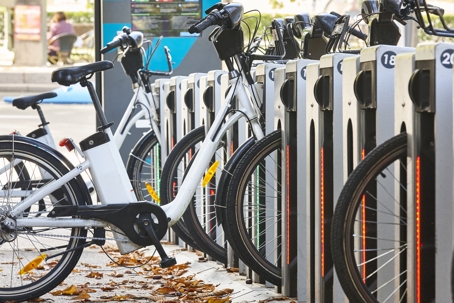Electric bicycles, or e-bikes, have become a common sight across Connecticut. They offer speed, convenience, and a low-carbon alternative to cars, contributing to a cleaner environment. However, their growing popularity has come with a corresponding increase in accidents, many of which involve serious injuries.
What Makes an E-Bike Different?
E-bikes may resemble regular bicycles, but they are equipped with battery-powered motors that assist the rider in pedaling. Some models can reach speeds up to 28 mph—fast enough to rival a moped or scooter. That extra speed increases the risk of serious injury.
Connecticut law divides e-bikes into three categories:
- Class 1: Pedal-assist only, with a top speed of 20 mph.
- Class 2: Pedal-assist, optional throttle-power, also capped at 20 mph.
- Class 3: Pedal-assist up to 28 mph. These are often used for commuting.
Each class of e-bikes comes with its own set of rules. As an example, Class 3 e-bikes have age restrictions for riders and are prohibited on certain bike paths and trails.
E-Bike Accidents Are Increasing
In May and June of this year (2025), 24 children were treated at Connecticut Children’s Hospital for serious injuries sustained while riding e-bikes. As these bikes have become more popular in Connecticut, we’ve seen more accidents involving:
- Riders crashing at high speeds
- Collisions in busy intersections or roundabouts
- More head injuries and fractures
- Defective or poorly maintained e-bike components
- Accidents on trails where e-bikes aren't allowed
Even experienced riders can face risks, especially when sharing the road with cars or navigating uneven pavement. And unlike cars, e-bikes offer no protection in a crash.
Helmet Laws
Connecticut law requires all riders of e-bikes to wear helmets while riding. Riding on sidewalks is also prohibited.
If a child or adult is injured on an e-bike or is hit by a car in a bike lane, questions about liability and fault are often complicated.
What to Do After an E-Bike Accident
If you're involved in an e-bike crash in Connecticut:
- Get medical help immediately. Even if injuries seem minor at first, it’s essential to get checked out.
- Document everything. Take photos of the scene, your bike, any vehicles involved, and your injuries.
- Don’t admit fault. Stick to the facts and avoid making statements that could be used against you later.
- Talk to a lawyer before signing anything. Insurance companies often try to settle claims quickly. You may be entitled to more than you think.
How to Stay Safe
E-bikes can be fun, fast, and efficient—but they’re not toys. Here are a few ways to protect yourself:
- Always wear a helmet, no matter your age. It’s the law.
- Follow the rules of the road. E-bikes are subject to the same laws as regular bikes.
- Use lights and reflectors or reflective clothing, especially at night or in low visibility.
- Ride defensively. Watch for road hazards. And don’t assume drivers can see you.
- Know where you’re allowed to ride. Trails, sidewalks, and roads may have different rules for different classes of e-bikes.
Injured While Riding an E-Bike in Connecticut? RisCassi & Davis is Ready to Help
At RisCassi & Davis, we’ve helped people across Connecticut recover after serious accidents. We understand the laws, insurance coverage issues, and challenges associated with e-bikes.
We’ve assisted people injured in biking accidents for 70 years. And we have received meaningful state and national recognition for our work in this area of the law. If you would like a free consultation with one of our Connecticut accident lawyers, please get in touch with us. There is no obligation.

